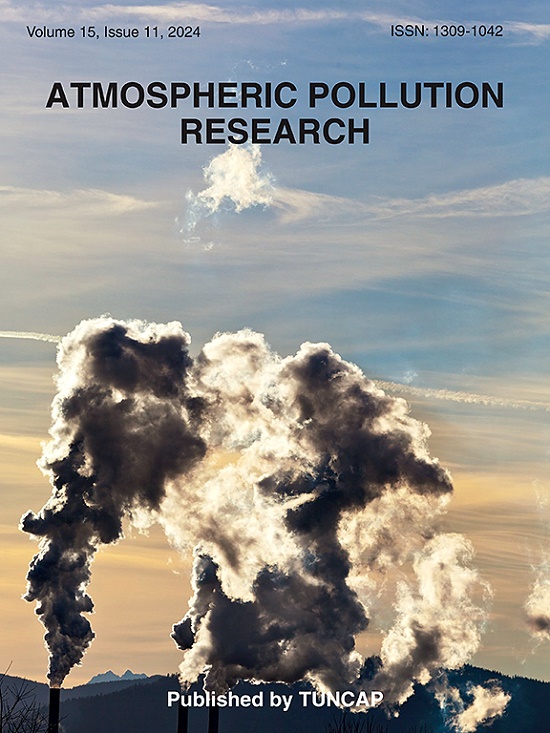Integrating spatiotemporal behavior, indoor-outdoor penetration, and ventilation rates to assess prenatal PM2.5 exposure and the association with birth weight
IF 3.9
3区 环境科学与生态学
Q2 ENVIRONMENTAL SCIENCES
引用次数: 0
Abstract
Previous studies that evaluated the association of PM2.5 with birth outcomes usually assessed personal exposure as outdoor PM2.5 concentrations of home address (home-based exposure), overlooking factors such as individual spatiotemporal activities, which may result in exposure error. In a prospective birth cohort conducted in Guangzhou, China during 2017–2020, personal PM2.5 exposure assessment was updated. We incorporated spatiotemporal activities into the exposure assessment by estimating PM2.5 exposure for each activity based on its specific location and duration. Additionally, an infiltration factor was applied to estimate indoor-outdoor penetration, and ventilation rates (different age groups and activity levels) were used to better adjust individual exposure levels. Logistic regression and distributed lag non-liner model with Cox proportional hazard model were used to assess the associations of prenatal PM2.5 exposure with low birth weight (LBW) and small for gestational age at a trimester and weekly level, respectively. Updated personal PM2.5 exposure was lower than the home-based PM2.5. Per interquartile range increase in PM2.5 during the third trimester was associated with increased risk of LBW, with ORs (95 % CIs) was 2.17 (1.14–4.14) for updated personal exposure and 2.30 (1.17–4.55) for home-based exposure. Updated personal PM2.5 in the 6th-7th, home-based PM2.5 in the 5th-7th, and both PM2.5 exposure in the 35th week later was associated with LBW. Our findings suggest that spatiotemporal activities, indoor-outdoor penetration, ventilation rate should be taken into account of exposure assessment, otherwise PM2.5 exposure and the association with adverse birth outcomes may be overestimated.

综合时空行为、室内外渗透和通风率来评估产前PM2.5暴露及其与出生体重的关系
以往评估PM2.5与出生结果相关性的研究通常将个人暴露评估为家庭住址的室外PM2.5浓度(家庭暴露),忽略了个人时空活动等可能导致暴露误差的因素。在2017-2020年在中国广州进行的前瞻性出生队列中,更新了个人PM2.5暴露评估。我们将时空活动纳入暴露评估,根据活动的具体地点和持续时间估算每种活动的PM2.5暴露量。此外,采用渗透因子来估计室内外渗透,并使用通风量(不同年龄组和活动水平)来更好地调整个体暴露水平。采用Logistic回归和分布滞后非线性模型结合Cox比例风险模型,分别评估产前PM2.5暴露与低出生体重(LBW)和孕周小胎龄的关系。更新后的个人PM2.5暴露量低于家庭PM2.5。在妊娠晚期,PM2.5的每四分位数范围增加与LBW的风险增加有关,更新的个人暴露的or (95% ci)为2.17(1.14-4.14),家庭暴露的or (95% ci)为2.30(1.17-4.55)。个人PM2.5在第6 -7周更新,家庭PM2.5在第5 -7周更新,第35周PM2.5暴露与LBW相关。我们的研究结果表明,暴露评估应考虑时空活动,室内外渗透,通风量,否则PM2.5暴露及其与不良出生结局的关系可能被高估。
本文章由计算机程序翻译,如有差异,请以英文原文为准。
求助全文
约1分钟内获得全文
求助全文
来源期刊

Atmospheric Pollution Research
ENVIRONMENTAL SCIENCES-
CiteScore
8.30
自引率
6.70%
发文量
256
审稿时长
36 days
期刊介绍:
Atmospheric Pollution Research (APR) is an international journal designed for the publication of articles on air pollution. Papers should present novel experimental results, theory and modeling of air pollution on local, regional, or global scales. Areas covered are research on inorganic, organic, and persistent organic air pollutants, air quality monitoring, air quality management, atmospheric dispersion and transport, air-surface (soil, water, and vegetation) exchange of pollutants, dry and wet deposition, indoor air quality, exposure assessment, health effects, satellite measurements, natural emissions, atmospheric chemistry, greenhouse gases, and effects on climate change.
 求助内容:
求助内容: 应助结果提醒方式:
应助结果提醒方式:


